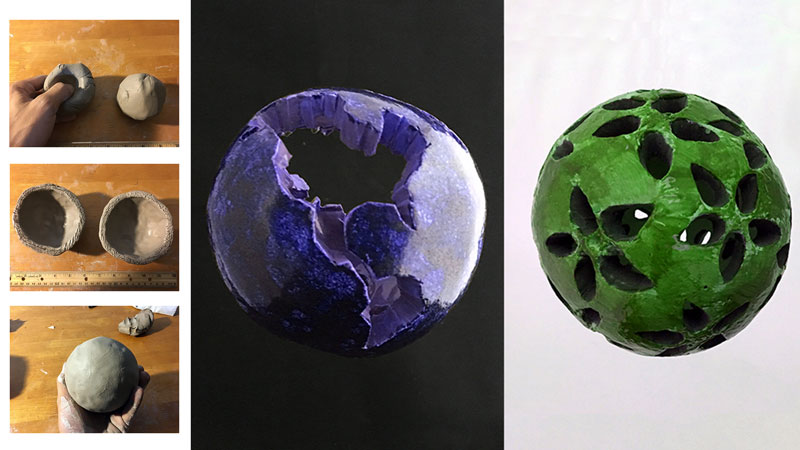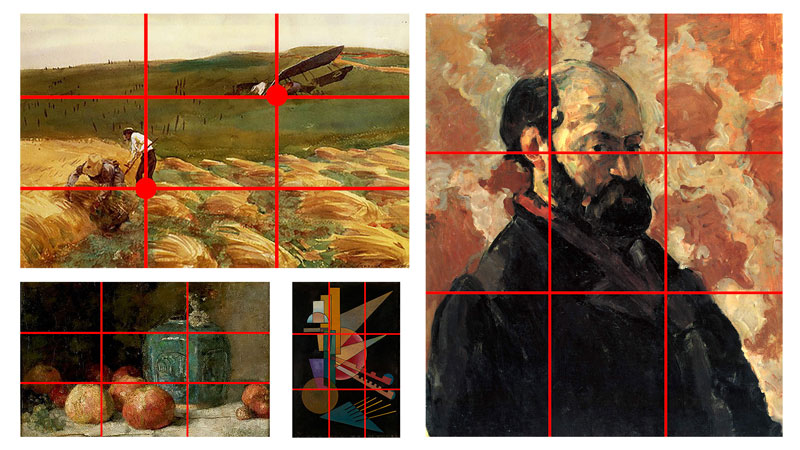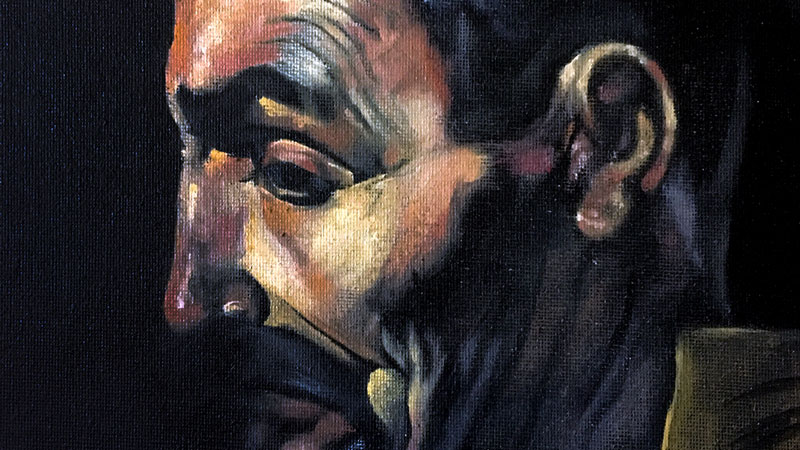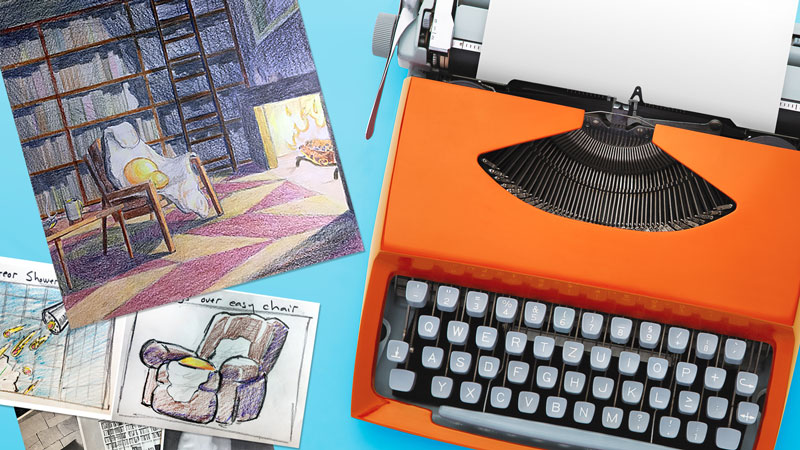
Each pictorial element is like a single paragraph – an idea that must tie in to the other ideas (pictorial element) around it. Let’s look at a successful work of art by a master painter, John Singer Sargent, and see how he developed his composition like a writer might develop a story. Then we will look at an art project idea that teaches art – made in stages.
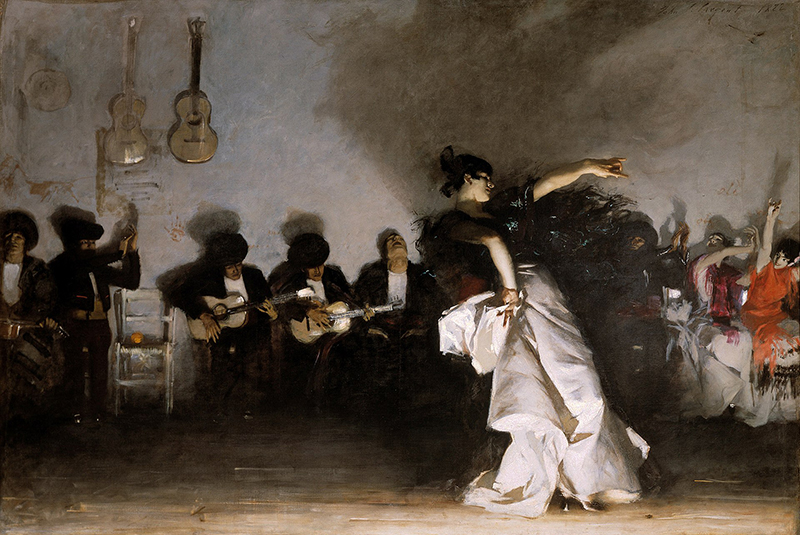
Entitled El Jaleo, this painting seems to capture a moment in time. The dancer’s posture tells us that she is in motion. The loose brushwork found in areas of the background give us the impression that Sargent was right there, painting furiously to keep up with the tempo of the dance itself. Therein lies the beauty of Sargent’s work. He has masked the careful planning that goes into creating such a riveting painting.
So how is painting a picture like writing a story?
The steps to writing a story may include some brainstorming, an outline, a rough draft, and a final draft. Of course, numerous revisions could take place between the rough draft and the final draft. So what do these stages look like when applied to visual art making? For the answer, we’ll go to John Singer Sargent’s’ sketchbook.
Brainstorming Your Composition
Brainstorming is the first step when deciding what to write about and what to paint. This stage could happen internally – just thoughts you may have. It could take the form of written expression – a list of ideas to choose from. In the case of “El Jaleo”, the first steps taken toward Sargent’s composition were some gesture drawings of a dancer. At this point he may have only known he wanted to make a painting of someone dancing.
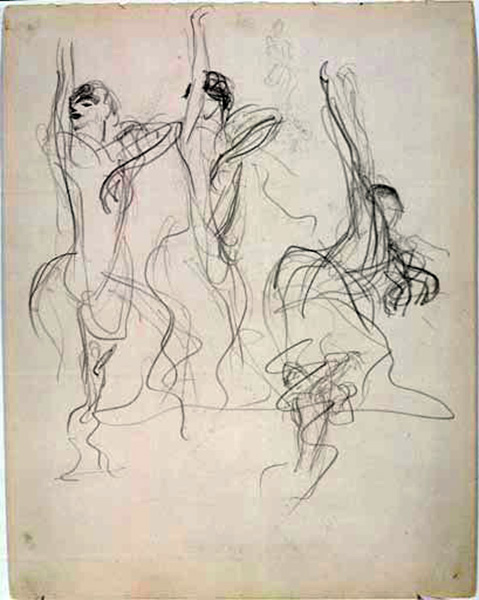
The Outline
In an outline, individual ideas or expressions are written down but they are not really linked together. There are no smooth transitions between ideas. When art-making, reference photos and/or sketchbook drawings act as the outline. They represent separate expressions that will eventually work together in a unified composition. Look at the sketchbook drawings below. Some of the visual “expressions” make it into the completed painting while others are intentionally left out.
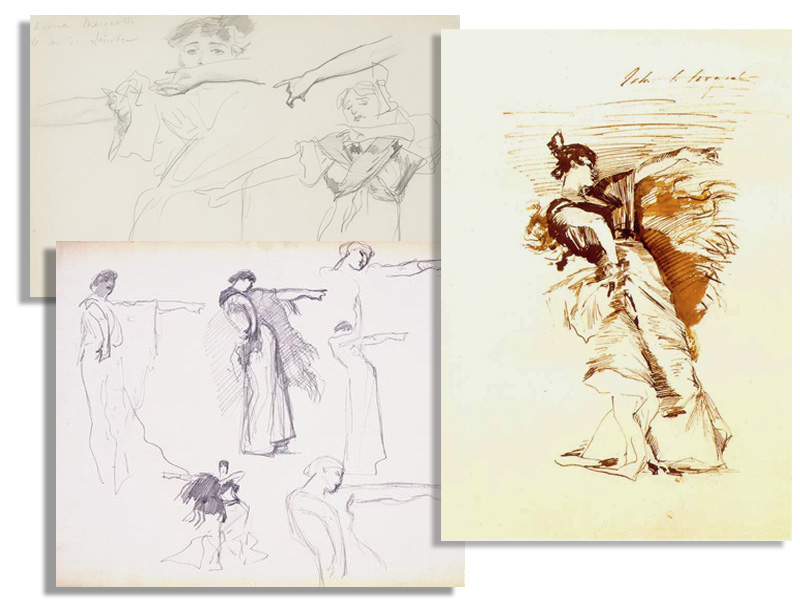
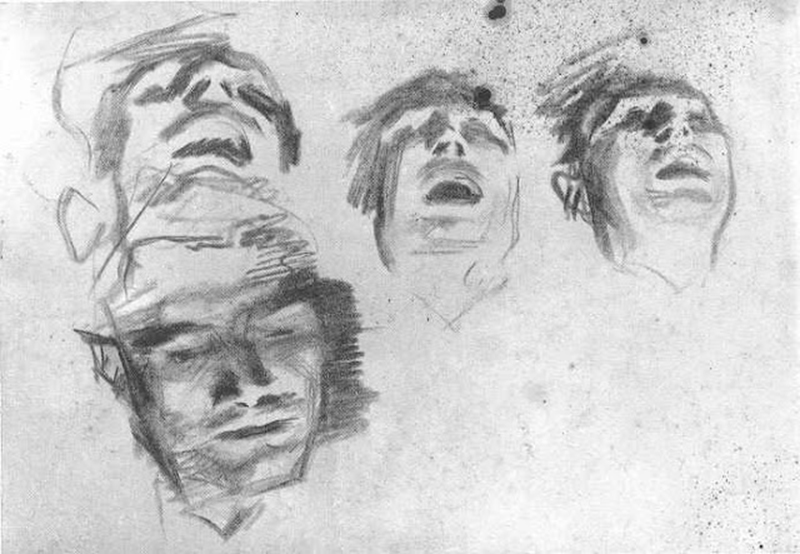
*Making preliminary drawing of your imagery in a sketchbook during this stage of development is, in many ways, better than working directly from photos because it gives the artist a chance to “practice”. Musicians practice their songs many times before performing in front of an audience. Our performance is the final draft of our completed artwork.
The Rough Draft
The rough draft is our first attempt at creating a unified composition from the individual elements collected/created during the outline stage. Sargent’s rough draft is an ink drawing.
Look at the men seated against the wall behind the dancer. Did Sargent use all of the preliminary sketches in his sketchbook? Which one(s) did he use?
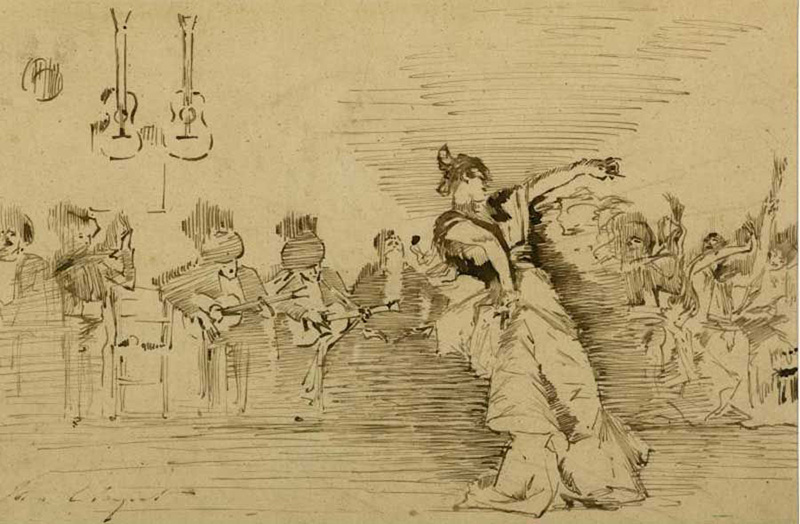
The Final Draft
In the case of “El Jaleo”, Sargent made almost no compositional changes from the rough draft to the final draft. He simply executed his design in full color using oil paint.
Classroom Lesson on Developing A Work of Art
The following art project is meant to encourage juxtaposition, the use of multiple references, the use of a sketchbook, and the development of art in stages.
The concept was taken from a popular television game show in which contestants spin a wheel and guess letters to solve a puzzle (maybe you know the gameshow of which I write). One of the word puzzles on this gameshow consist of two phrases joined by a single word that each phrase has in common. Below are a few examples. The words that joins the phrases are in bold.
- Blow off some steam engine
- Meteor shower cap
- Eggs over easy chair
The chances of finding a single image that includes both a meteor shower and a shower cap is zero. Therefore, to have a successful project the artist/student must first find or create multiple references, then put them together in an intelligible way.
The three phrases listed above make up the brainstorming stage for the artwork that follows. From those phrases, I chose to sketch out the second and third options. Here is a great example of why one shouldn’t always jump directly from brainstorming to the final draft. The chair in my sketch below is not an easy chair (I didn’t know that). I drew a chair from memory and had I not sought out references (in the next step) I would have misrepresented my phrases.

My Outline
I found three images that I wanted to use and also made a couple of sketches. Of course, none of the images I am referencing were used in their entirety. Also, none of the images had anything to do with my concept so I am not infringing on any copyrights.
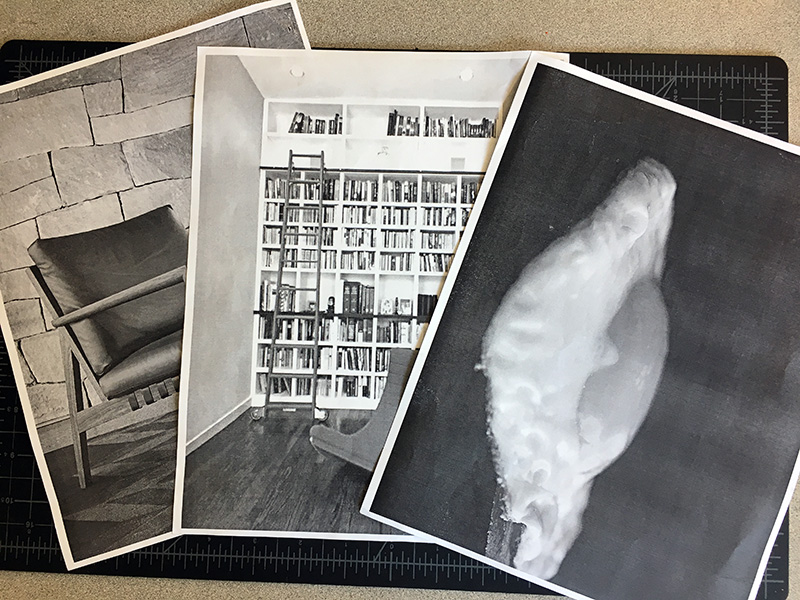
My Rough draft
My rough draft is small – only four by six inches. Small rough drafts help the artist avoid getting bogged-down in details. I deviated from the reference photos I collected in several ways. First, I drew the ladder to the right in my composition, different from the reference. I also decided to make the shelves dark instead of light. The addition of mounted hunting trophies at the top completed the mood I was going for.
At this stage, I have placed another egg in the picture frame over the fireplace (I’ll change that to a chicken in the final draft). I’ve also added a table next to the chair, just for visual weight. The table was a last minute compositional choice and would have been frustrating to add in a more carefully rendered drawing. The rough draft is a safe place to try ideas without fear of “messing it all up”.
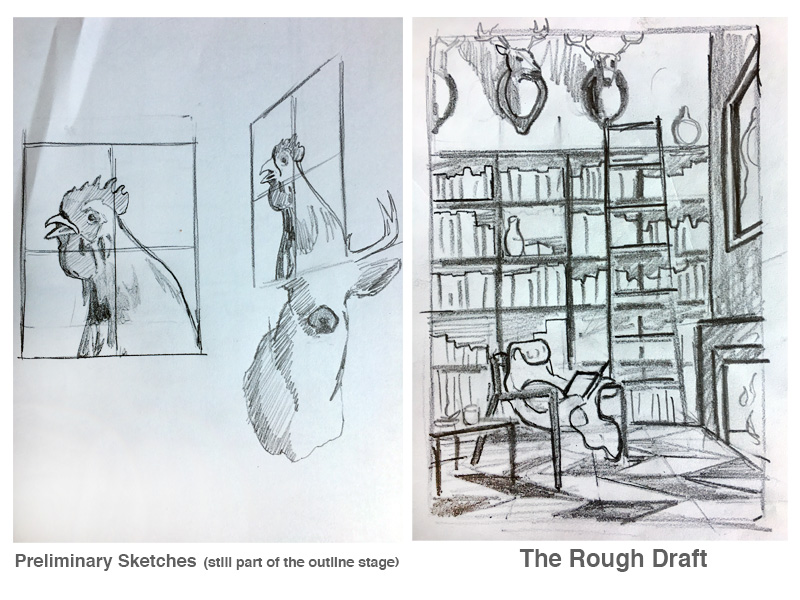
Notice that the chair is drawn from the same angle as the reference photo found during the outline stage, while the egg does not match its corresponding reference. References may be collected for a variety of reasons, point of view (the chair) being just one. The egg photo was collected to help with color, value, and texture.
My Final Draft
Here’s a look at the finished drawing, completed with colored pencils. The image is completely unique and tells a short, witty story to the viewer once they notice all of the elements.
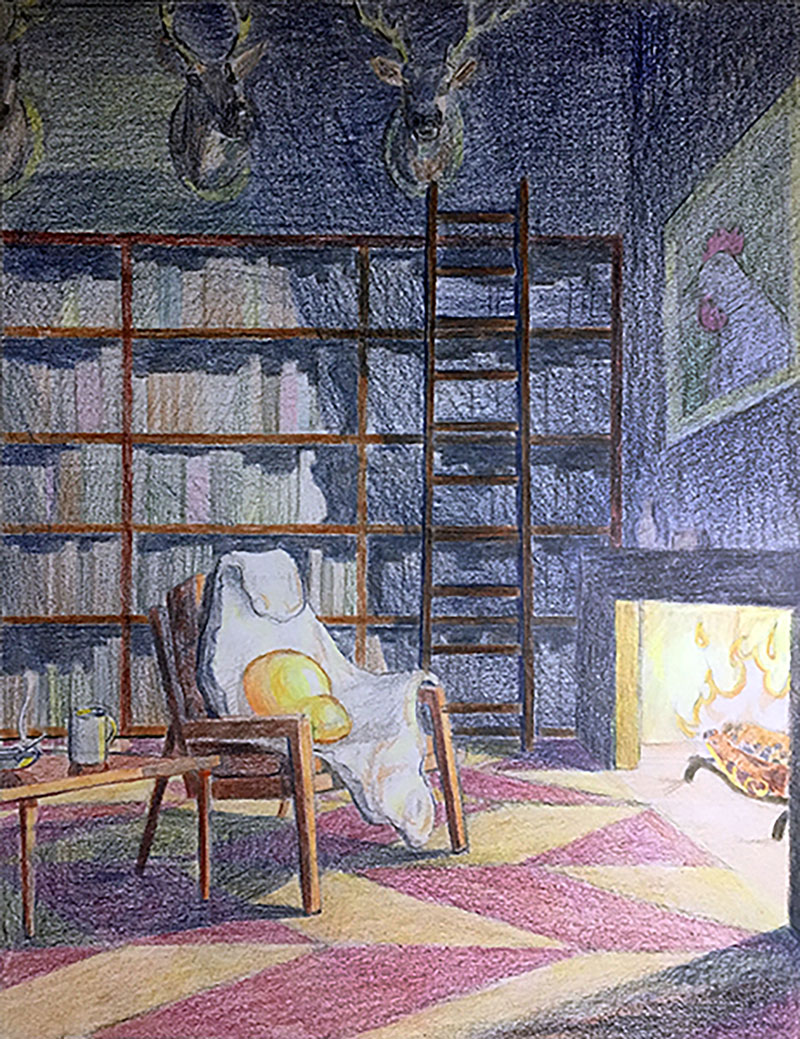
Ideas sometimes come to us in a flash, like lightning from above – a “eureka moment”. Other times, ideas seem to bubble up slowly from deep within. Developing a composition in stages allows our ideas to mature, often resulting in a more sophisticated expression with layers of meaning.
If so, join over 36,000 others that receive our newsletter with new drawing and painting lessons. Plus, check out three of our course videos and ebooks for free.

